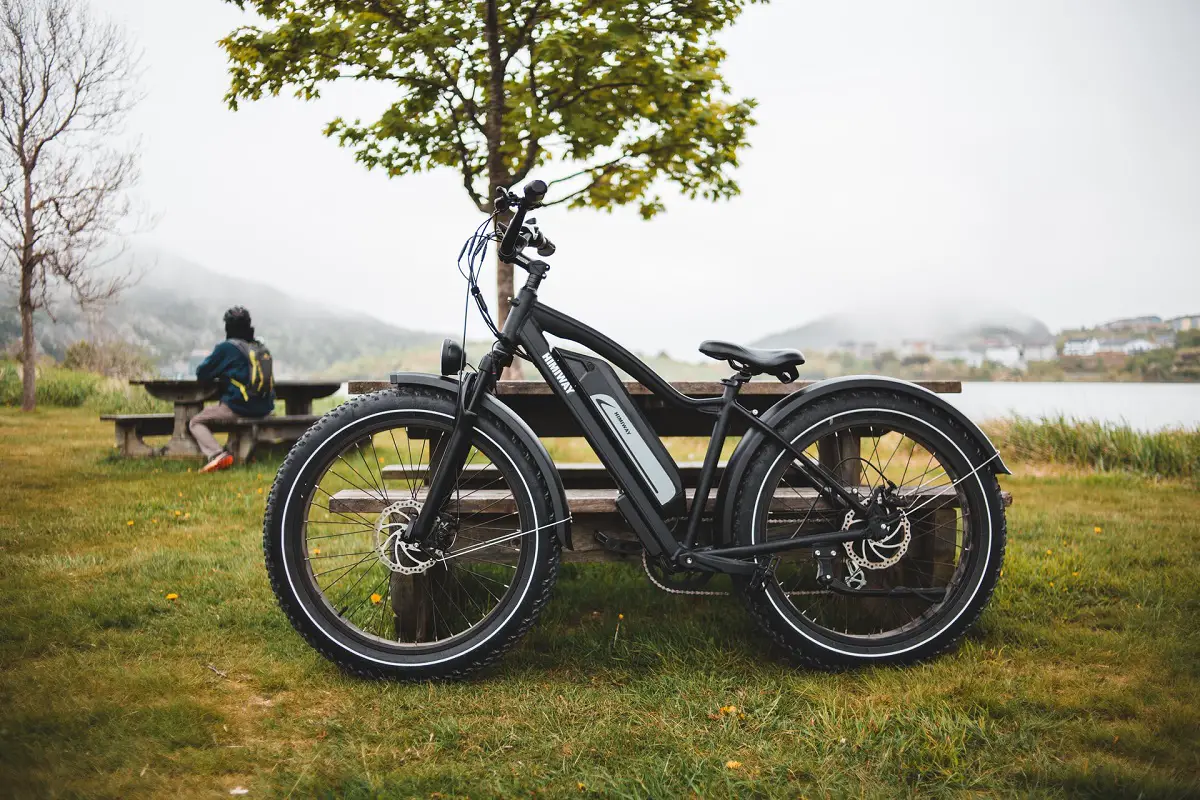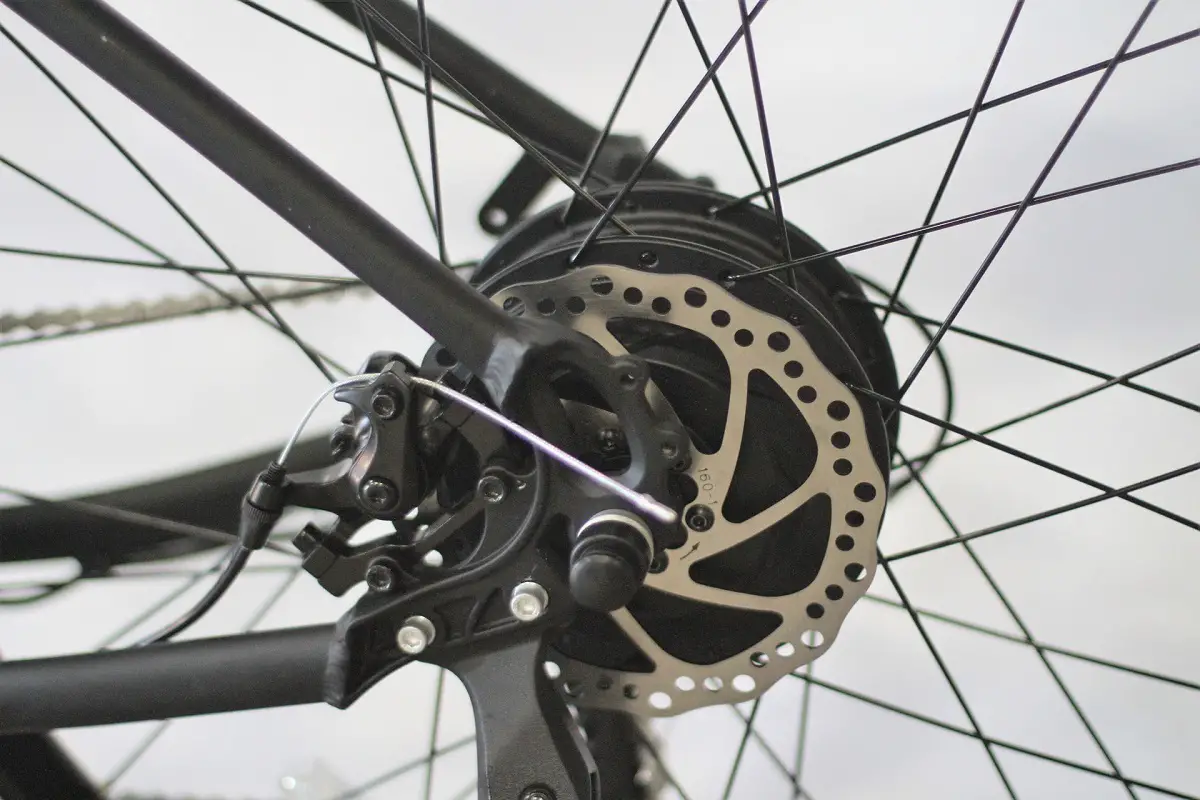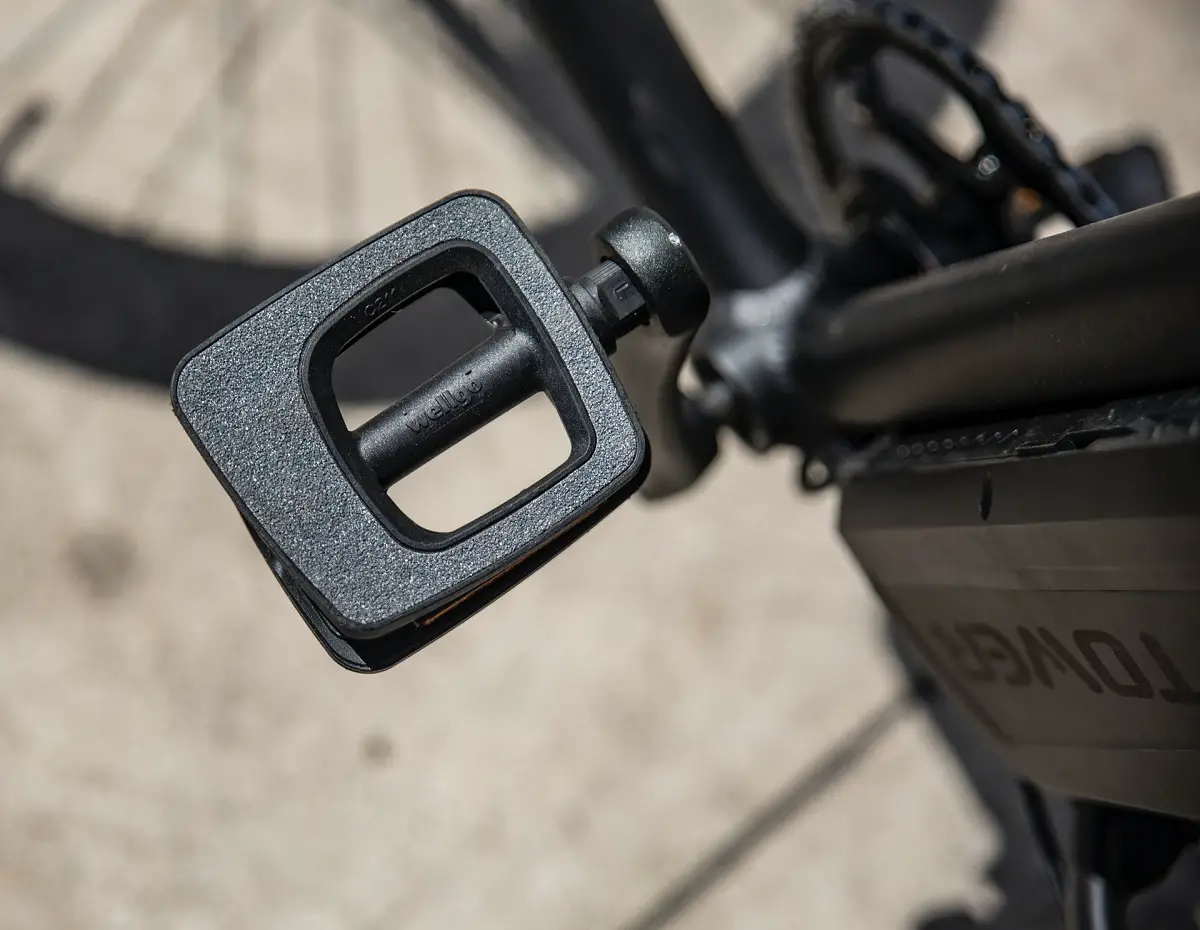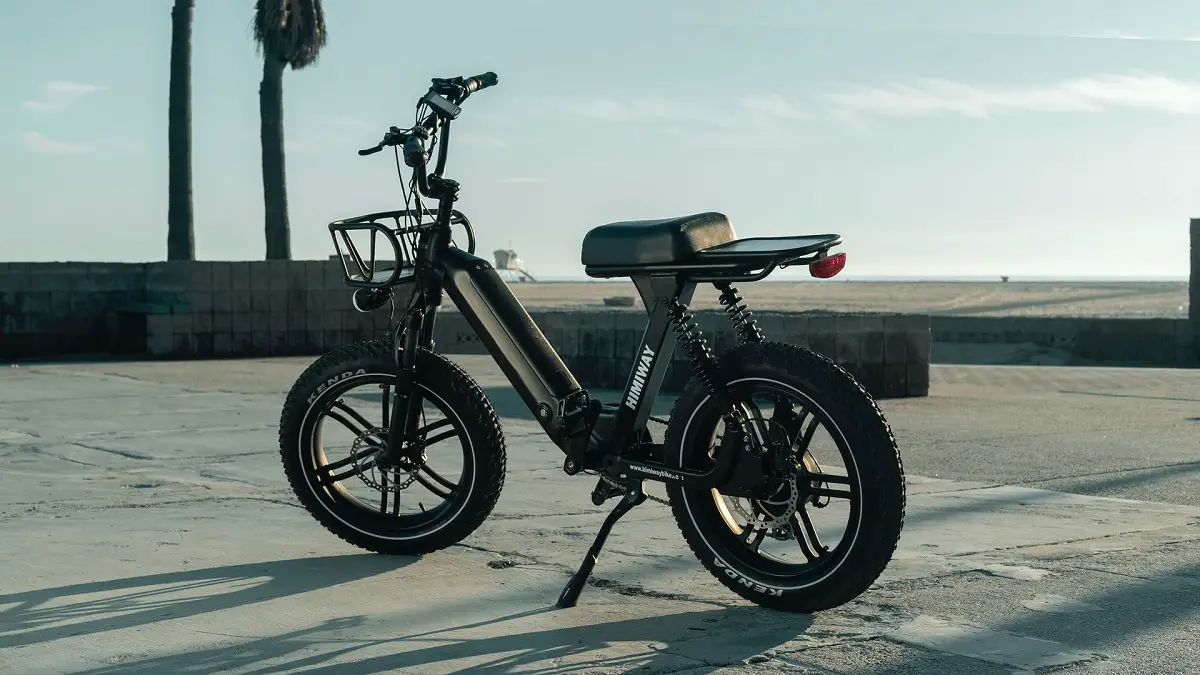When buying an electric bike, it can be pretty tough to decide between all the different options available to you. Ebikes come in so many different forms that there can be a world of difference between one model and the next. The way ebikes deliver power is one of their most defining features, which makes the mid drive vs hub motor debate of utmost importance.
Interestingly, the newer mid-drive motors were introduced a couple of years after hub motors. They were considered a great improvement and are generally considered the gold standard ebike motors to this day.
NB. It’s also worth noting that mid-drive motors are sometimes also called central motors or mid motors, though mid drive motor is by far the most common designation.
If you’re not sure which motor is right for your ebike, continue reading to understand all there is to know about mid-drive vs hub motor ebikes.

There are several importance differences between hub and mid drive ebike motors.
The hub motor is attached to one of the wheels of the bike so is built in to the hub.
A mid drive motor however, are usually located in between your bike’s pedals, in the centre of the ebike frame.
A hub motor directly delivers power to one of the wheels of the bike, most often the rear wheel. Therefore the torque is applied straight to the wheel itself, ultimately turning the bike into an ebike.
There are 2 different types of hub motors, gearless (or direct drive) and geared hub motors. Gearless hub motors are relatively simple with limited moving parts, only the hub bearings. Because of this, they are often found on cheaper ebikes.
Geared hub motors work a little differently. They use the gears inside the motor to bring the revolutions of the motor down which means more power for the bike. This more complex system means that geared hub motors are slightly more power efficient. It also means they are usually found on the more expensive electric bikes.
Mid-drive motors work similarly to hub motors in principle but are placed differently. Instead of powering the wheels, mid drive motors provide power and torque to the gears of the bicycle instead. So these motors power the ebike via the drivetrain assembly as opposed to hub motors powering the ebike directly via the wheel.
Hub motors deliver a consistent degree of power when you’re pedaling the ebike.
Mid-drive ebikes however can assess your pedaling power via in-bult sensors. This allows the pedal assist function to adapt up or down depending on the strength of your pedaling.
Hub motor driven ebikes are usually a standard type frame (with the ‘non-standard’ motorized wheel).
Beacused mid-drive motors are built into the bottom of the ebike, the frame is usually customized to fit the particular motor.
Hub drive ebikes are quite a bit cheaper than mid-drive ebikes.
So with the above main differences explained, let’s get onto the pros and cons of mid drive vs rear hub ebike motors.

One of the most important factors of the mid drive vs hub motor ebike discussion centers around price. This is one area where hub motors reign supreme, as they are almost always less expensive than their mid drive counterparts.
Part of the reasoning behind this is that hub motors are easier to install. They only need to be placed on one wheel, which makes them less complicated than mid drive motors from a mechanical standpoint.
Because of this, they also require less maintenance, which is another pro in their favor. Should they ever get damaged and need repairs or replacement, it is much easier to do so with a hub drive vs mid drive motor.
In other words, a hub drive motor system is more enclosed. Because it interacts with far fewer components of the ebike, this makes it less likely to encounter failure or damage.
While some hub motors are geared, most are gearless. This means there are fewer moving parts involved with the process except for the bearings of the hub drive itself. They are less prone to rust or over-wear, so they have a much longer lifespan.
Gearless hub motors also cause less stress or exertion on the gears and chains of the bicycle itself, another reason why they are better for maintenance in the long run.
This also means that you are less likely to have to repair or replace both the hub motor and the gears of the bike at the same time. They aren’t tied together, which means they will likely not fail together either.
So while hub motors are cheaper and easier to install and repair, they aren’t without their downsides.
The cons of hub motors include efficiency and power. Powering one wheel vs the gears themselves does not equal the kind of mileage or efficiency that is now commonly associated with ebikes.
This doesn’t just mean lower top speeds and inferior max ranges, but it also translates into slope climbing abilities being reduced as well.
Hub motors are also heavier vs mid-drive motors. Not only does this mean a heavier ebike, but it can also mess up the overall weight distribution of the bike.
Regardless of whether the hub drive is placed on the front wheel or the rear wheel, it is pretty much guaranteed that one half of the ebike will be much heavier than the other. This results in a riding experience that can feel a bit off balance, providing less than ideal smoothness or stability.

A mid drive ebike vs hub bike offers a lot of advantages that are hard to argue with. They are more advanced pieces of machinery and are capable of unlocking the full potential of ebikes, though they aren’t without their own set of downsides as well.
It’s impossible to understand what mid-drive motors have done for ebikes without discussing the gear ratio. All the gear ratio refers to is their ability to power the back tire and the chain and gear set simultaneously with the same force or exertion.
This is tied to a lot of gear shifting functions that electric bikes are known for. So, for example, a low gear setting can allow the rider to climb steeper hills better vs a hub motor of similar power. It also allows them to climb up hills longer and more efficiently than hub motors for longer treks.
Another pro of mid drive motors is that they are smaller and lighter than hub drives. Most mid-drive motors only weigh around 5 lbs. This not only makes them better options for lightweight bikes for weight distribution but allows them to be better integrated into the bike frame from both a visual and practical standpoint.
If you’ve ever had difficulty telling the difference between a standard bike and an electric bike, there’s a very high chance the ebike you were looking at was using a mid drive motor. This is because hub motors are much bigger and easier to spot, but mid-drive motors can be seamlessly integrated into the whole package in a subtle manner.
One of the biggest pros of mid drive motors is that they are better for pedal assist functions. They are typically designed to be used alongside manual pedaling. This means that ebikes with mid drive motors offer the best of both worlds. They can be used for electric leisure and for good old-fashioned exercise better than hub drive bikes.
While mid drive bikes have a lot of pros, there are two big cons that need to be discussed: their pricing and their maintenance.
Because mid drive motors are installed onto the chains and gears of your bike, they can end up wearing them out a lot faster than hub drive bikes. This results in more maintenance in the long run.
To put things in perspective, the average bicycle is designed to handle 100w of equivalent human exertion. Since mid drive motors are often outputting 500w of juice, you can probably see why this ends up in the gears becoming worn out faster.
Luckily, there are ebikes that are designed with more durable belt drives to counteract this issue, but this always drives up the price, which leads us to the second big con of mid drive motors: they are expensive.
This is true from both a purchasing and a maintenance standpoint. Almost all mid drive bikes are more expensive than hub drive bikes mainly due to how much more difficult it is to install them. Placing a hub drive on a wheel is a lot faster and easier than integrating a mid drive successfully in the center of the bike where the chains and gears are.
The general rule of thumb is that you should probably install your hub motor on the front wheel rather than the back. There are a couple of important reasons why this is the case.
When sitting on a bike, most of your body weight will be aimed toward the back. To help balance this out, placing a hub motor on the front tire would be considered the wise choice.
From a maintenance perspective, front wheels tend to get fewer repairs and replacements than rear wheels. They are less likely to get flat tires and therefore require fewer replacements.
If you install your hub motor on the wheel more likely to get repairs, it will only prolong the maintenance process. You will have to remove the motor every time the wheel needs replacing, which makes the process very tedious. This is why a front wheel installation is much easier in the long run from a maintenance perspective.
There are exceptions to this rule, though. If you are using a particularly powerful hub motor, something with at least 750w, you may be better off installing it on the rear wheel.
Bikes are usually designed to have more fortified forks in the back than the front, so a powerful hub motor placed on the front wheel can burn them out quickly. This is why strong hub motors ought to be installed in the back.

Now that everything is said and done, you’re probably asking yourself which one is better. To sum up the hub motor vs mid drive motor debate, mid-drive motors offer superior performance, whereas the hub drive motors offer better ease and maintenance.
Having said that, there is a reason why many people prefer mid-drive bikes and why they are more popular nowadays. Mid-drive ebikes undeniably bring more to the table than hub motor bikes.
Mid-drive electric bikes definitely win the hub motor vs mid drive efficiency debate. They also offer superior speed, range, and handling and will make riding easier in harsher conditions.
There’s still something to be said about the superiority of the hub vs mid drive electric bike, though. They are cheaper, which can really come in handy to anyone on a budget, and they can feel like a great upgrade when all you’ve ridden your entire life were standard bikes.
But at the end of the hub drive vs mid-drive ebike debate, I think you’ll be better off with a mid-drive one. Most people who want an ebike want to have something that does it all, be it great exercising, impressive range, or fantastic cruising abilities. They’re also more comfortable to ride, especially for longer commutes.
You can definitely make a convincing case for either kind. The point of today’s article was to help you make an informed and educated decision, so as long as you understand your own preferences, the bike you pick can’t be the incorrect one.